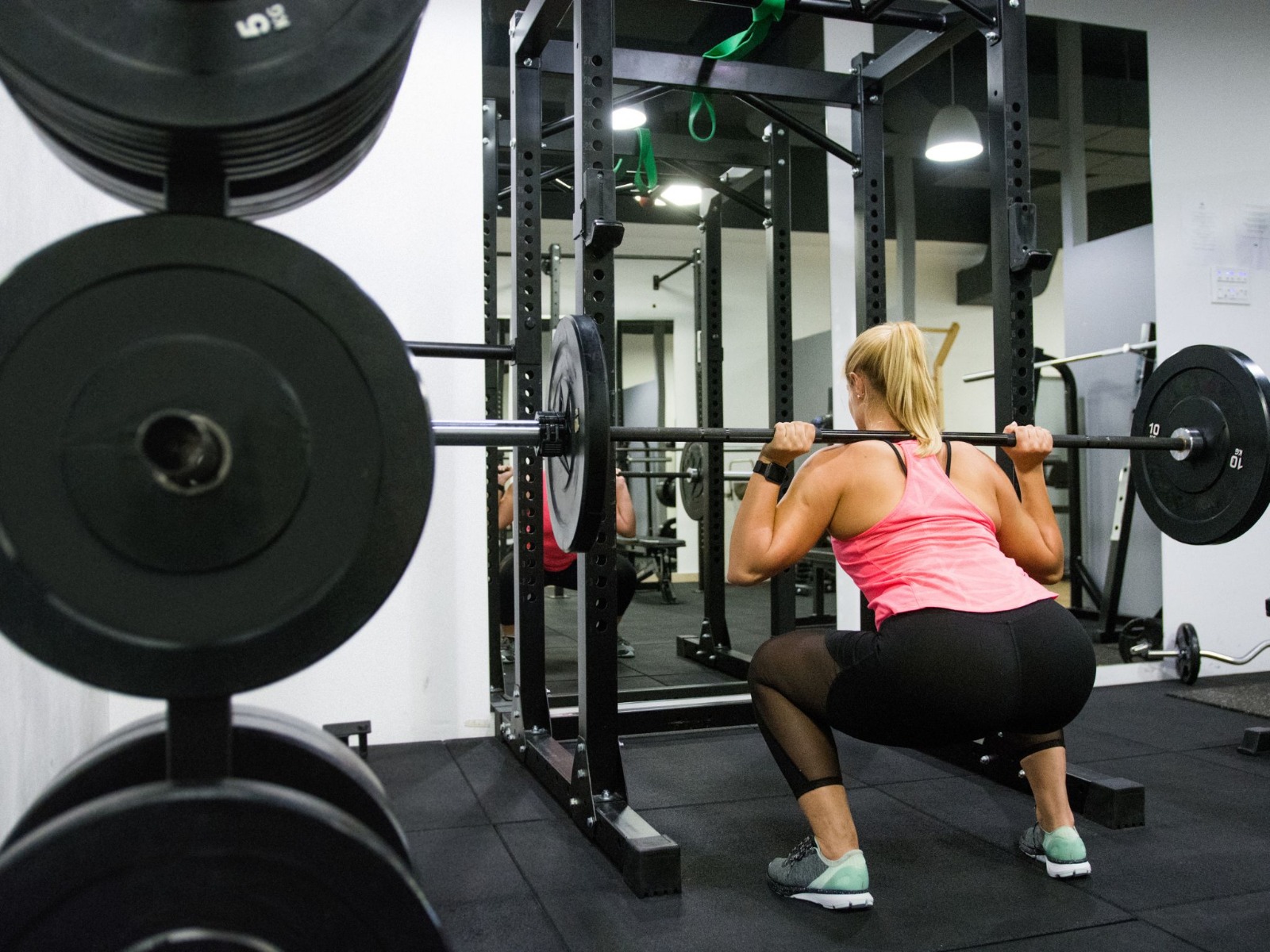Purchasing a squat rack is an important decision that requires consideration of several factors to ensure it meets your needs and fits your space. Here’s a comprehensive guide to help you choose the right squat rack:
What is it being used for?
Primary Uses:
- Strength Training: If your main focus is on squats, bench presses, and other heavy lifts, a power rack or half rack with a high weight capacity is essential.
- Versatility: For those wanting to perform a variety of exercises (pull-ups, dips, etc.), look for a rack with additional attachments and features.
- Safety: For lifting heavy weights, prioritize racks with sturdy safety bars or spotter arms to ensure safety during lifts.
Size & Space
Assess Your Space:
- Dimensions: Measure the space where you plan to place the rack, including ceiling height. Ensure you have enough room not only for the rack but also for comfortable movement around it.
- Footprint: Power racks typically have a larger footprint but offer more stability and versatility. Half racks or foldable squat racks can save space in smaller areas.
Types of Racks:
- Power Rack: Offers the most stability and safety features. Ideal for home gyms with ample space.
- Half Rack: Takes up less space while still providing some safety features. Suitable for medium-sized spaces.
- Foldable Rack: Can be folded against the wall when not in use, perfect for small spaces or garages.
- Squat Stand: The most compact option but generally offers fewer safety features. Best for very limited spaces or those on a tight budget.
Price
Budget Considerations:
- Entry-Level (€80-€500): Basic squat stands or foldable racks. May lack some stability and versatility features but are sufficient for beginners and take up less space.
- Mid-Range (€500-€2,800): Better quality half racks and some power racks. Usually more stable and versatile, and usually come with a decent number of attachments.
- High-End (€2,800+): Heavy-duty power racks with advanced features, extensive attachment options, and higher weight capacities. Suitable for serious lifters and those looking for long-term durability.
Versatility
Attachments and Features:
- Pull-Up Bar: Many racks come with a pull-up bar, adding to their versatility.
- Dip Station: Some racks have attachments for dips, useful for upper body workouts.
- Safety Bars/Spotter Arms: Essential for those who lift solo and need to ensure their safety during heavier lifts.
- Plate Storage: Built-in storage for weight plates can save space and keep your workout area organized.
- Cable Attachments: Some of our high-end racks offer pulley systems for additional exercises like lat pulldowns and cable rows.
Recommendations
Power Rack:
- Example: Bolt Strength Multi Functional Rack
- Pros: Highly stable, versatile, with a wide range of attachments.
- Cons: Requires more space and a higher budget.
Half Rack:
- Example: Full Commercial Half Rack 2.0
- Pros: Good stability, slightly smaller footprint, moderately priced.
- Cons: Less stable than a full power rack, fewer attachment options.
Foldable Rack:
- Example: Wall Mounted Folding Squat Rack
- Pros: Space-saving design, decent stability.
- Cons: Limited attachment options, requires wall mounting.
Squat Stand:
- Example: Puls8 Squat Stand 2.0
- Pros: Compact, budget-friendly.
- Cons: Limited safety features, less stable.
Final Tips
- Check Reviews: Look for user reviews and ratings to get real-world insights into the rack’s performance and durability.
- Consider Future Needs: Think about all the long-term fitness goals you have and whether the rack can accommodate future attachments or upgrades.
- Safety First: Ensure the rack you choose has the right safety features, especially if you plan to lift heavy weight without a spotter with you.




